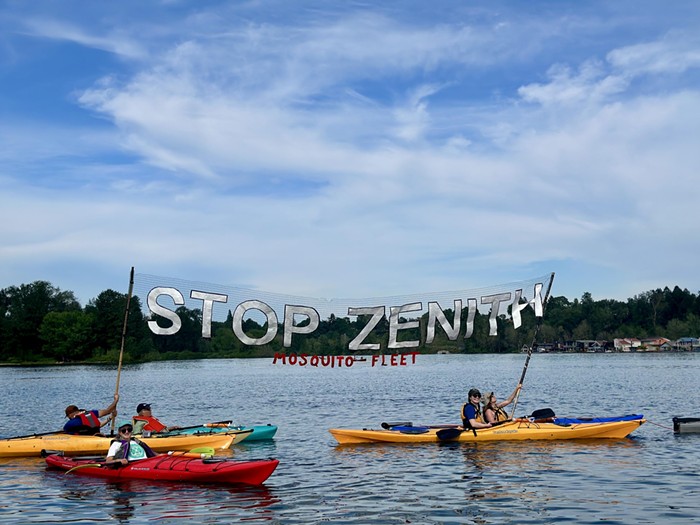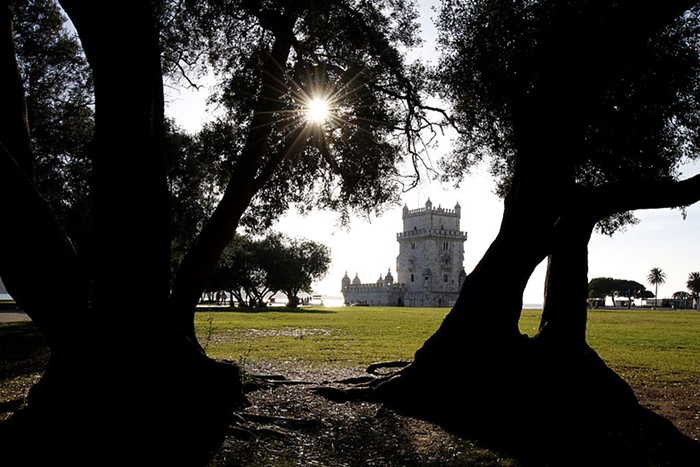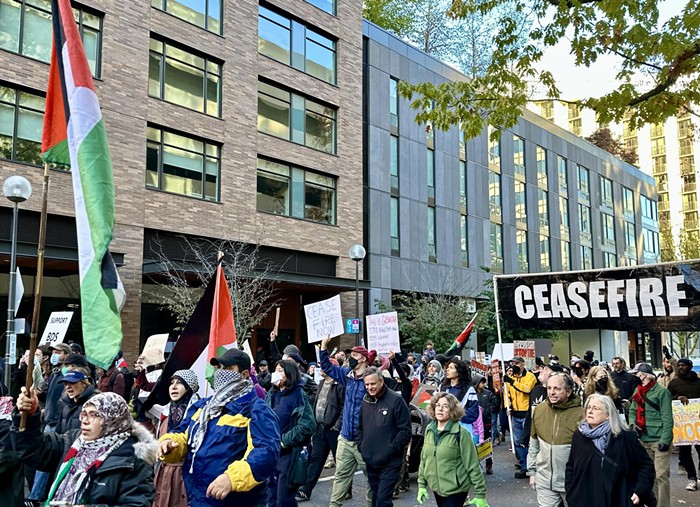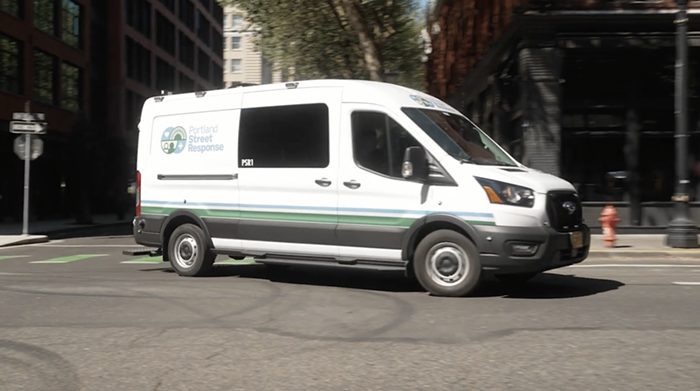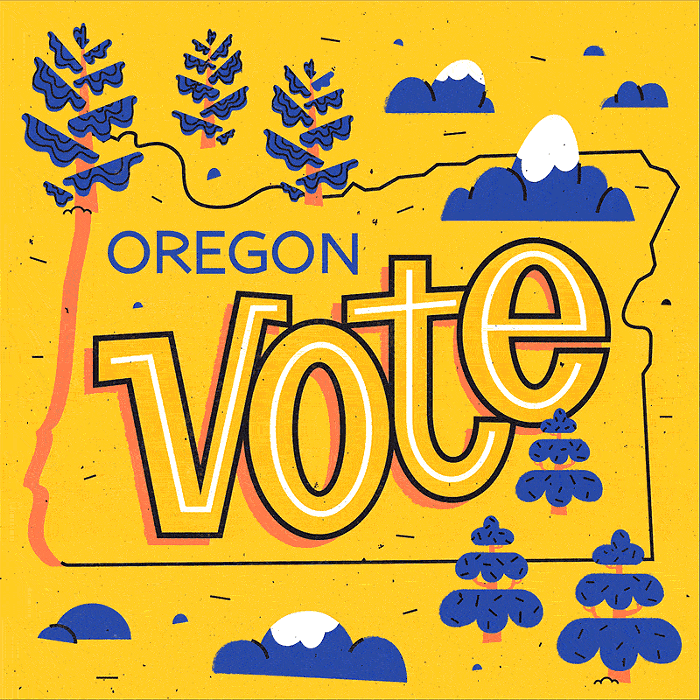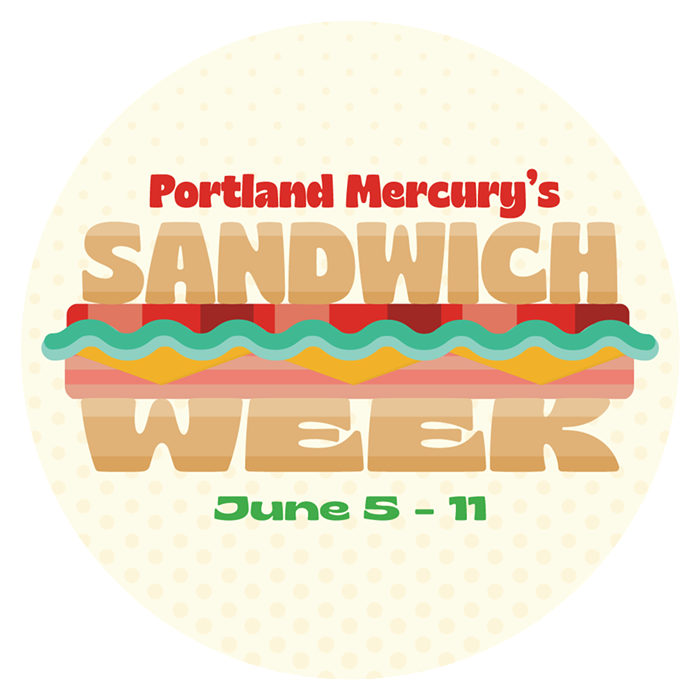You’re fucking sick of traffic.
Maybe you love your car. Maybe you merely tolerate it. But chances are you’re one of the 67 percent of Portlanders who commute to work in a personal vehicle. And chances are you’re over it.
You already know why you’re over it. People are moving to Portland in droves. Many of them also commute by car. That means our old roads are serving more vehicles, which means Portland traffic is growing worse.
“Traffic congestion in the Portland region can now occur at any hour of the day, including holidays and weekends,” reads a new report from the Oregon Department of Transportation (ODOT). “It is no longer only a weekday peak hour problem.”
It’s the perfect environment for an old-fashioned Portland highway brawl.
Earlier this year, Oregon lawmakers cobbled together a $5.3 billion package that will hike gas prices, raise vehicle registration and title fees, and even tax bicycle sales—all in the name of improving the state’s transportation system.
There’s a lot that’s good about the bill, including unprecedented money for transit service, bike lanes, and crosswalks. But one of the largest single projects included in the package comes with serious questions.
For $450 million, ODOT wants to slay one of its long-time dragons: A notorious choke point on Interstate 5 as it rushes—or, more often, crawls—through the Rose Quarter.
By widening the stretch of highway between I-405 and I-84 by a lane in each direction and adding shoulders, state officials say they can speed up Portlanders’ daily trips up and down the city’s busiest corridor. Portland city planners—tantalized by the project’s promises of new bridges, bike routes, and the chance to increase density in the Rose Quarter—are on board.
But this being Portland, it’s not that simple.
In the city’s grand four-decade tradition of looking askance at freeway expansion, a coalition of transportation activists, environmental groups, and economists are trying to stop the megaproject before it starts.
They point to research that suggests widening the highway won’t ultimately do much for congestion. And they argue that agreeing to dump hundreds of millions of dollars into a freeway makes hypocrites of city officials who talk tough about reducing carbon emissions and ending road deaths.

Now, with Portland City Council set to take up a plan that could put the city’s formal stamp of approval on the Rose Quarter project, things are about to get loud.
“This is the place to start taking the project apart,” says Chris Smith, a Portland planning commissioner who’s repeatedly tried to defang the I-5 proposal in the last five years. “I’d like to fire a warning shot right now at council.”
There’s no denying that the stretch of freeway in question has big problems.
As I-5 makes its way through the heart of Portland, its two lanes are suddenly fed by two other highly trafficked interstates, I-84 and I-405, as well as traffic from what transportation wonks call “the box”—the busy spot where Broadway and Weidler meet Williams and Vancouver.
The result is an ugly gray ballet.
Southbound drivers hoping to exit I-5 onto I-84 are forced to merge right, even as drivers entering I-5 from Broadway are trying to merge left. Likewise, northbound Priuses looking to exit I-5 and take the Broadway Bridge jostle with Subarus trying to come off of I-84.
In all, there are four of these “weaving sections,” each of which contributes to sluggish pandemonium. According to ODOT, this stretch of I-5 boasts the highest crash rate of any highway in the state. Most of those collisions are rear-end crashes at relatively low speeds—fender benders. (The author observed one of these on Labor Day, failing spectacularly to take a picture.)
Even without crashes, the I-5 interchange is plagued by delays. The American Transportation Research Institute, a trucking industry group, says I-5’s junction with I-84 is one of the top 50 bottlenecks in the country—the only junction in Oregon that has the dubious honor of cracking the organization’s top 100.
And it’s getting worse. According to ODOT, the average time it takes to travel through Portland on I-5—in either direction—increased from 2013 to 2015, no matter if drivers were traveling in the morning, at mid-day, or in the midst of rush hour. (Oddly, the agency’s ideal “free flow” through the area is when vehicles can travel 60 mph—faster than the posted speed limit.)
The state presents its I-5 project [PDF] as a solution. For $450 million (an exceedingly early estimate that many suspect will rise), ODOT wants to create an additional “auxiliary lane” in each direction through Rose Quarter.
That means that the on-ramps onto I-5 that currently force abrupt weaving will continue as lanes, offering drivers more time to merge with I-5’s traffic. ODOT believes the new lanes will cut crashes by 30 to 50 percent—and when there are crashes, new shoulders will get disabled vehicles away from the flow of traffic.
Taken together, ODOT says the improvements will shave 6.5 minutes off travel time during the peak morning commute, and eight minutes during evening rush hour, “with more reliability mid-day.”
This plan has predictable and influential backers, including the Port of Portland and the Oregon Trucking Association (OTA).
“You need to recognize that that I-5 Rose Quarter section is the only two-lane section of the freeway between Canada and Mexico that’s through an urban center,” says OTA President Jana Jarvis. “We see a great need for added capacity.” (ODOT insists that auxiliary lanes don’t actually create “added capacity,” instead smoothing out the capacity that’s already in place.)
“We see the value in a project that gives cars and trucks that are merging and weaving on and off at the exit more time to do so and reduce collisions,” says Melanie Mesaros, a spokesperson for the Port of Portland.
The I-5 proposal has aspects that tantalize city planners and active transportation wonks, too.

A centerpiece of the project—pushed for by city officials over years of discussion and public process that tamed an even more highway-centric design— is the “cap.” Existing bridges where Weidler, Broadway, and Williams cross the highway would be replaced with a single massive cover that would bury I-5 for a couple of blocks, diminishing the freeway’s gashing presence.
The plan also calls for a new bike and pedestrian bridge that would connect North Winning Way—just north of the Moda Center—to Northeast Clackamas, across I-5.
Those elements of the plan have the Street Trust, Oregon’s largest biking, walking, and transit advocacy organization, keeping mum—even though the group believes that widening the highway is pointless.
“Our priority is to make sure these local street improvements don’t get value engineered out of the project,” says Gerik Kransky, the organization’s policy director. “Let’s set a precedent of how cool it could be to build a cap.”
Another element of the project has the city’s Bureau of Planning and Sustainability (BPS) salivating: Once it improves I-5, the state is pledging to lift congestion standards near the highway, which would allow for denser development in the Rose Quarter.
The money for all these changes, of course, has to come from somewhere.
The $450 million megaproject will be partly funded with $30 million a year from state coffers—money that the legislature dictated should begin flowing in 2022. That’s a huge influx of cash for Portland, which perennially struggles to pay for even routine road maintenance. (For context, Portland expects to make roughly $16 million a year from the 10-cent gas tax that officials begged voters to pass last year.)
“I don’t think we would be able to practically do this without a coincidence of something on the freeway,” says Joe Zehnder, the city’s chief planner. But he notes: “It’s still, at the end of the day, an investment in a freeway system.”
And in a city that’s built a reputation out of opposing freeways, that’s a problem.
The words “freeway project” have long been epithets to Portlanders.
In the 1970s, the defeat of the proposed Mount Hood Freeway saved hundreds of homes—and ensured that Southeast Portland wasn’t disastrously bisected. The death of that highway is frequently held up as the moment Portland became a national innovator in urban planning.
More recently, a $2.8 billion plan for a new I-5 bridge over the Columbia—the “Columbia River Crossing,” or CRC—was laid to rest in 2014, after years of acrimony between Portland, Vancouver, business owners, commuters, and alternative transportation advocates.
And now that it has state funding, the I-5 Rose Quarter proposal has drawn opponents who had a hand in killing both of those failed efforts.
In August, a group calling itself No More Freeway Expansions registered as a lobbying entity with the City of Portland. Among the group’s listed representatives: Joe Cortright, a local economist who played a key role in pushing back against the CRC, and Ron Buel, another CRC opponent who worked for former Portland Mayor Neil Goldschmidt as he fought the Mount Hood Freeway in the early ’70s.
Working alongside them is Chris Smith, the respected planning commissioner who’s fought the I-5 project for years, and Aaron Brown, an advocate who managed last year’s campaign for a local gas tax. Organizations like OPAL Environmental Justice Oregon, the Audubon Society of Portland, BikeLoudPDX, and the NAACP Portland Branch are also supportive.
Their essential message: The I-5 scheme is a massively expensive and unnecessary project that, if anything, will make things worse.
They start with the promise to ease congestion—those eight sweet evening minutes ODOT says you’ll snatch back when the project is complete.
What might be free-flowing lanes in the months after a project is completed inevitably become choked again, as more people rush to use the now-convenient freeway.
Even if the agency is correct about those numbers, chances are good that the relief will be temporary. That’s because more-efficient freeways tend to attract more drivers. What might be free-flowing lanes in the months after a project is completed inevitably become choked again, as more people rush to use the now-convenient freeway.
In economist speak, this concept is known as “induced demand,” but in everyday parlance, it comes down to something even ODOT concedes: You can’t build your way out of congestion.
Far more effective than more lanes, opponents argue, would be “congestion pricing”—the act of tolling drivers at varying rates depending on time of day, deterring peak-hour congestion.
“It is the one thing that works,” says Cortright. “It is the only thing that will fix it.”
Legislators might be coming around to that opinion. Tolling currently doesn’t exist in Oregon, but included in this year’s transportation package was a requirement that officials pursue congestion pricing on both I-5 and I-205, from the Columbia River to where the two highways converge in Tualatin. The Oregon Transportation Commission has a mandate to apply for federal approval for such a system by the end of next year.
Tolling comes with some fraught questions—particularly when it comes to disproportionately affecting low-income commuters who have to drive at peak hours—but Cortright and others argue it alone would be enough to solve the Rose Quarter’s problems.
“We know that widening highways will not address congestion,” says the Street Trust’s Kransky. “So let’s talk about what we should do. Congestion pricing is probably that thing.”
But the many opponents of the I-5 project go even further than questioning the proposal’s effectiveness. They also say it goes against things Portland claims to stand for.

Portland’s climate action plan—a source of frequent boasting from city officials—includes a a goal of reducing carbon emissions by 40 percent below 1990 levels by 2030.
“And yet,” the anti-expansion group noted in a letter to city council in August, “as with other freeway expansions across the country, this project encourages more driving and more carbon emissions, not less.”
Opponents also note argue the “safety” component of the I-5 project probably won’t prevent traffic-related injuries or deaths—which is the goal of Portland’s oft-touted Vision Zero efforts.
The fender benders playing out on I-5, after all, take far less human toll than many collisions on Portland’s “high-crash network”—the web of roads throughout the city, some of which are controlled by ODOT, where nearly half of Portland’s deadly and serious crashes occur. According to the Portland Bureau of Transportation, the city’s seen 28 traffic-related deaths this year.
All of these arguments were laid out earlier this year by Smith, who in February attempted to convince fellow members of the Portland Planning and Sustainability Commission to remove the I-5 project from the city’s Transportation System Plan. (Public planning is maddeningly convoluted, but the basic gist is that removing the project from Portland’s plan would put the city in conflict with the plan created by the Metro regional government, potentially forcing some kind of reckoning.)
“We killed 45 people on our streets last year,” Smith said at the time (it was actually 44). “None of them died on this stretch of freeway. We don’t kill people on this stretch. We do kill people on the orphan stretches of highway that ODOT is responsible for. [Yet] somehow half a billion dollars is going to materialize to make driving easier in the central city.... This is a massive misallocation of resources.”
His words held sway. In 2012, when Smith last tried to convince the commission to kill the project, he was the only vote in opposition. This time, his viewpoint narrowly lost out, four votes to six.
“I got three more votes this time,” he tells the Mercury. “Give me time and I’ll get there.”

So what’s actually at stake in the current debate?
On Thursday, September 7, city council is slated to begin considering the Central City 2035 Plan, a sweeping blueprint for how inner-city Portland will grow and transform in coming decades. Tucked into that plan are updates to the city’s list of favored transportation projects. And among those projects are three separate items that would give the city’s blessing for the I-5 widening endeavor.
It’s those three items Smith tried to get the planning commission to remove in February. Now he and his allies are going to try to convince city council to do the same.
History suggests they face long odds. Three of the council’s five members—Nick Fish, Amanda Fritz, and Dan Saltzman—voted to include the project in a plan approved in 2012 (again, public planning is grotesque in its minutiae). And when asked about the project by Willamette Week in June, four councilmembers’ offices voiced support for the proposal.
The council’s remaining commissioner, Chloe Eudaly, “is skeptical about the whole thing,” according to her chief of staff, Marshall Runkel.
If the city were to pull the I-5 project out of its transportation plans, there would be questions. Among them: How would Portland reconcile its views with Metro and the state, which believe the benefits of the project have statewide significance? Could ODOT force Portland to comply with at least part of the project?
And perhaps most importantly, if Portland activists do successfully dismantle the project, will the city be able to use any of the money on more worthy things? Most people the Mercury spoke with for this story are inclined to believe no, suggesting that killing the effort would earn the city political ire. The money might instead be passed out to another highway project elsewhere in the state.
But perhaps there’s another way.

The lobbying group led by Cortright has so far met with only one councilmember: Saltzman, the city’s transportation commissioner. He was on vacation when the Mercury reached out, but according to sources in his office, the commissioner left the meeting with a new perspective on the I-5 project.
While he won’t push for removing the thing from city plans, Saltzman is now expected to introduce a resolution calling on the state to institute tolls first, and then decide whether the extra highway lanes are necessary.
Even if passed, the resolution would be essentially toothless. There’s no guarantee that ODOT would agree. “If city council wants to make some recommendations, we will certainly be willing to listen to them,” says Don Hamilton, an ODOT spokesperson. “That’s as far as I’m going to go on that right now.”
Still, it’s a sign that advocates’ efforts have already been somewhat effective. And with a final council vote not expected until January—and plenty of opportunity for outcry in the meantime—there’s no telling what could happen.
Discussing the possibilities, Cortright’s rhetoric inevitably returns to the Mount Hood Freeway fight, the city’s shining beacon of highway death.
“Forty years ago, we were smart enough to figure out how to do something other than build another freeway,” he says. “I’ve got to believe we’re smart enough to figure out how to do that today.”


